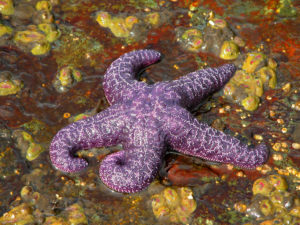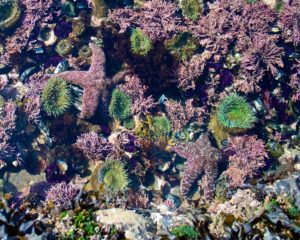

We Now Know the Viral Cause of Starfish Wasting Disease. But How Did It Start?
On October 21, 2014, a diverse group of scientists from prestigious institutions in the United States published a paper in which they identified a virus that has been killing off starfish in record numbers on the West Coast of the United States, since summer, 2013.
The die-off had set off a coordinated effort among amateurs and marine scientists alike, since it began. The scope of the authorship of the findings reflects the enormity both of the problem and of the concern generated by the previously unexplained die-off.
As reported below:
Marking a major breakthrough in the mystery of one of the largest wildlife die-offs ever recorded in the world’s oceans, scientists believe they have found the cause of a disease that has killed millions of starfish since last year along California and the Pacific Coast.
The epidemic, which threatens to reshape the coastal food web and change the makeup of tide pools for years to come, appears to be driven by a previously unidentified virus, a team of more than a dozen researchers from Cornell University, UC Santa Cruz, the Monterey Bay Aquarium and other institutions reported Monday.
Scientists found that the same virus that is killing starfish today is also present in museum starfish specimens dating back to 1942, indicating the disease has been present in Pacific waters for 72 years. Yet although there were smaller outbreaks in years past, nobody knows what triggered the current marine plague, which has killed up to 95 percent of starfish in some areas and spread from Alaska to Mexico.
“Something may have happened recently that caused it to go rogue, because we’ve never seen anything like the current outbreak,” said Peter Raimondi, a professor of biology at UC Santa Cruz and co-author of the study.
The outbreak, known as “wasting syndrome,” has infected at least 20 different species of starfish since it was first detected in Washington’s Olympic Peninsula in June 2013. It spread to Oregon, Monterey Bay, Big Sur and as far south as Baja California, even killing starfish in major aquariums in Seattle, Vancouver, Monterey and other cities.
When infected, starfish at first become sluggish, then develop white lesions. Within days, they curl up and parts of their arms break off, sometimes literally crawling away. Not long after, the entire starfish turns into a gooey mess and dies.
Densovirus
In a paper published Monday in the Proceedings of the National Academy of Sciences, the researchers concluded the disease is a type of densovirus. It is similar to viruses that affect insects, sea urchins and other invertebrates, and is distantly related to parvovirus, the cause of feline distemper in cats and canine parvovirus in dogs.
If the outbreak were a murder mystery, scientists now know the killer’s name. But the case is not yet closed.
Source: Paul Rogers, San Jose Mercury News
You will find the rest of the article, as well as the actual paper on the scientists’ findings here.
In the next pages, you will see reports from:
- Sitka, Alaska,
- Haystack Rock and Cannon Beach, Oregon,
- Monterey Bay, California.
- University of California, Santa Cruz, California.



